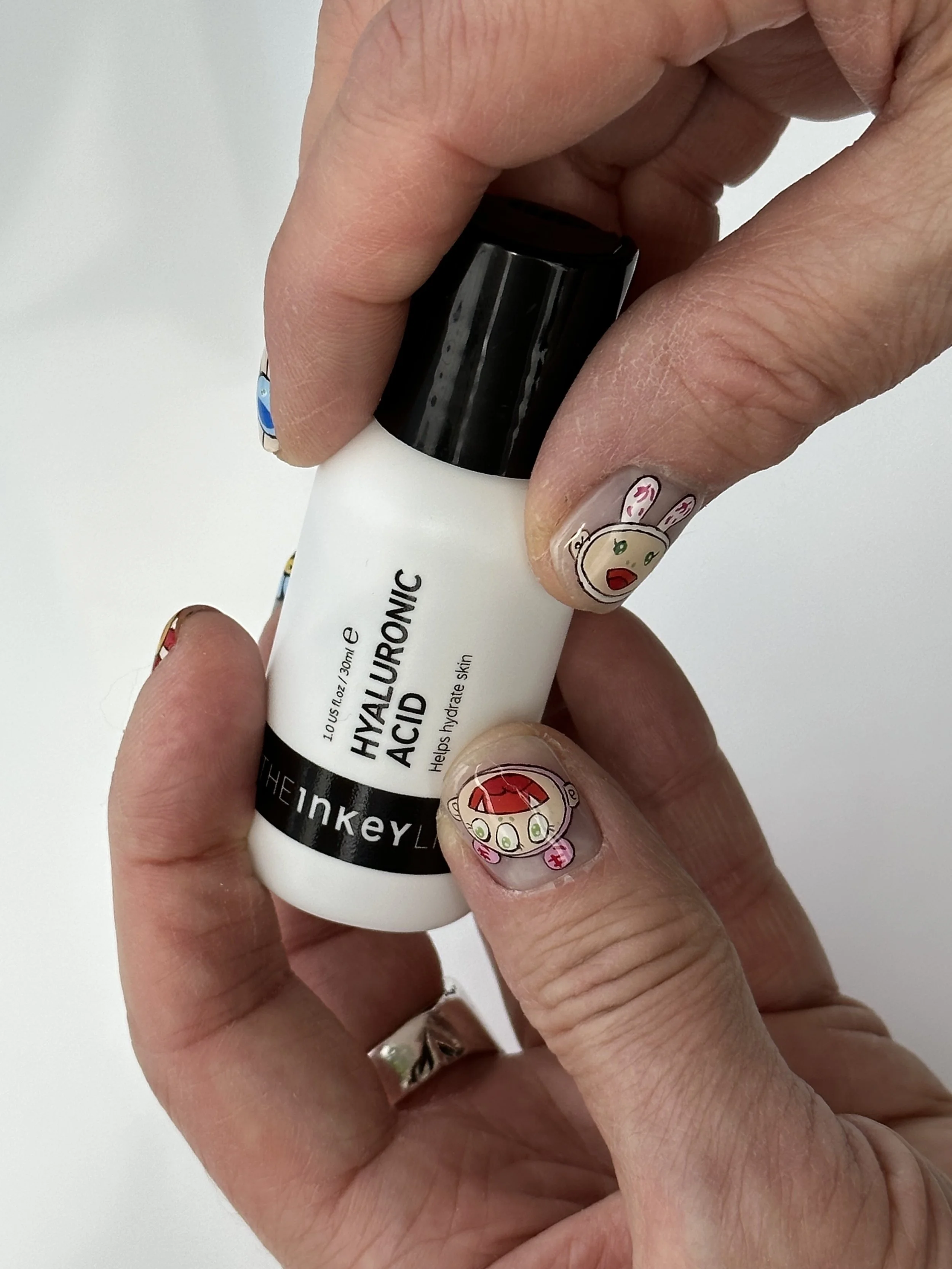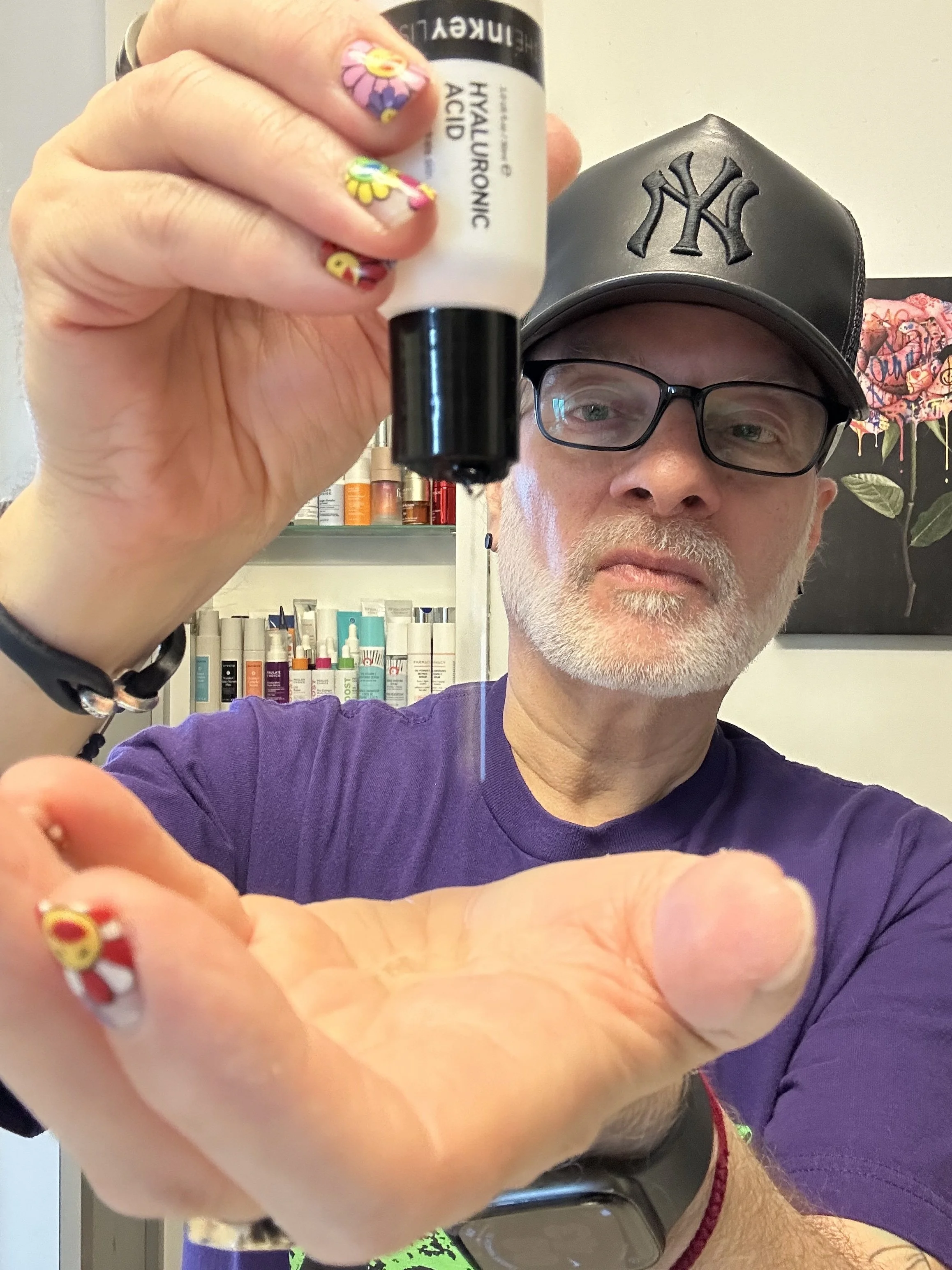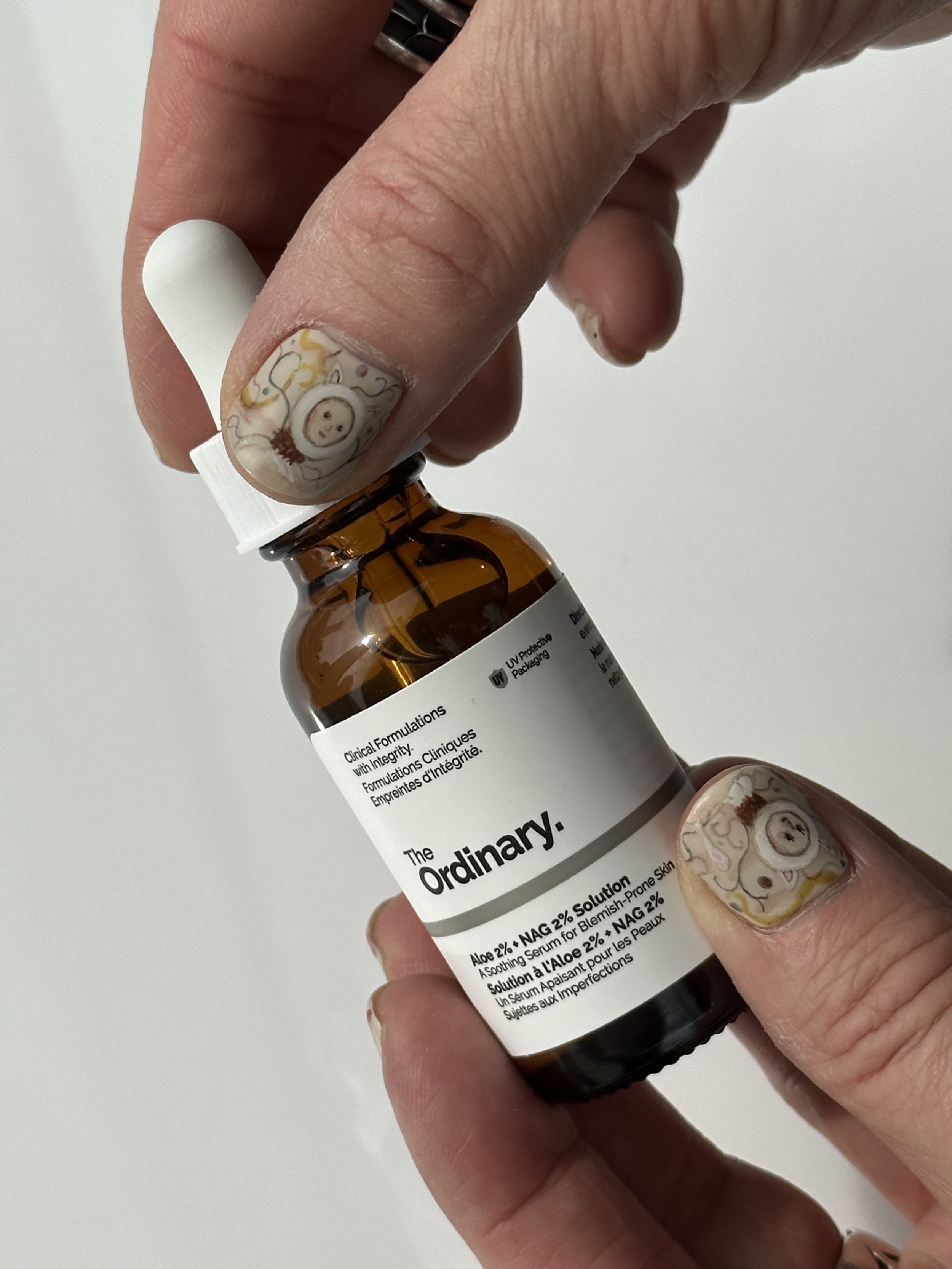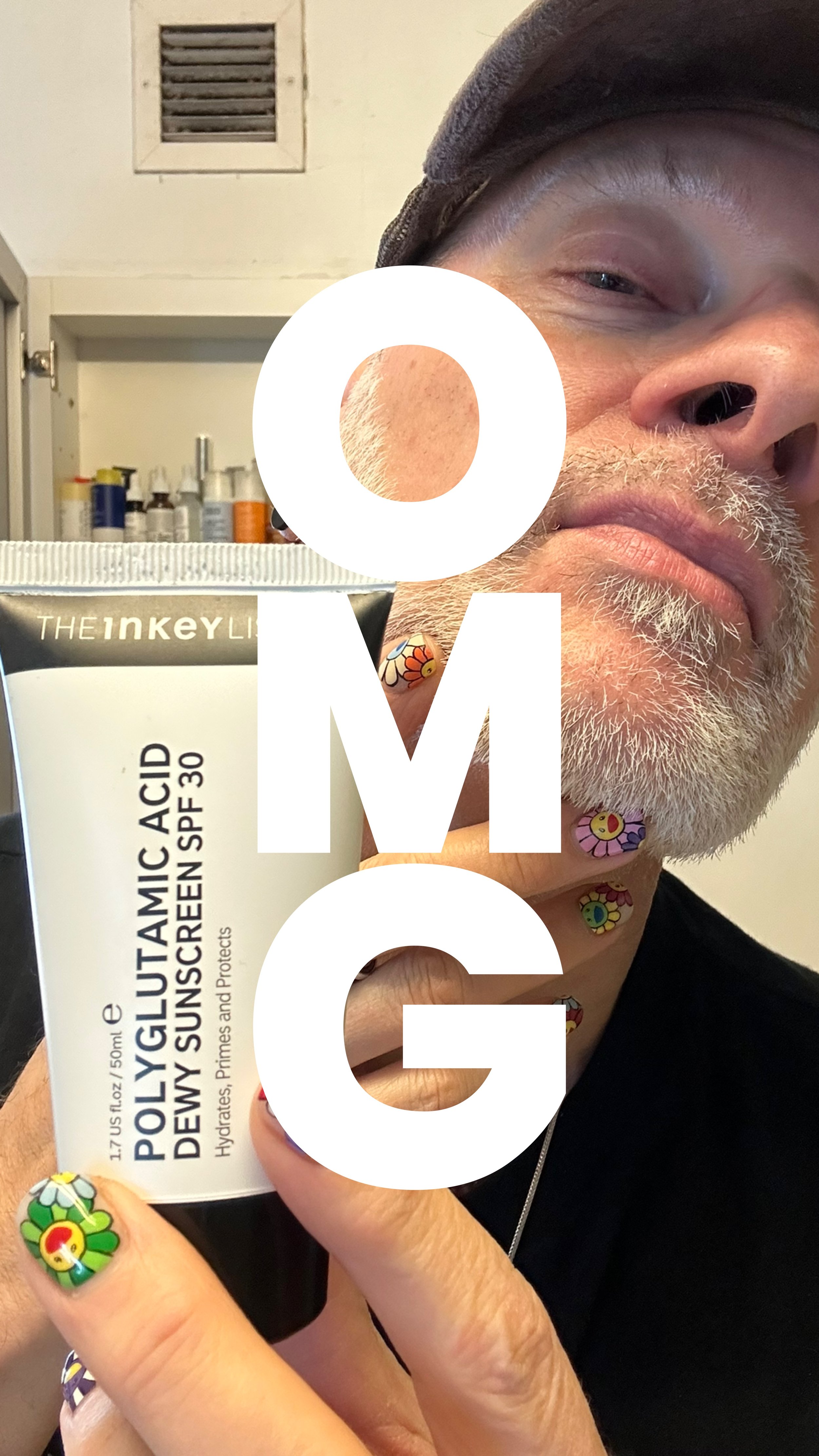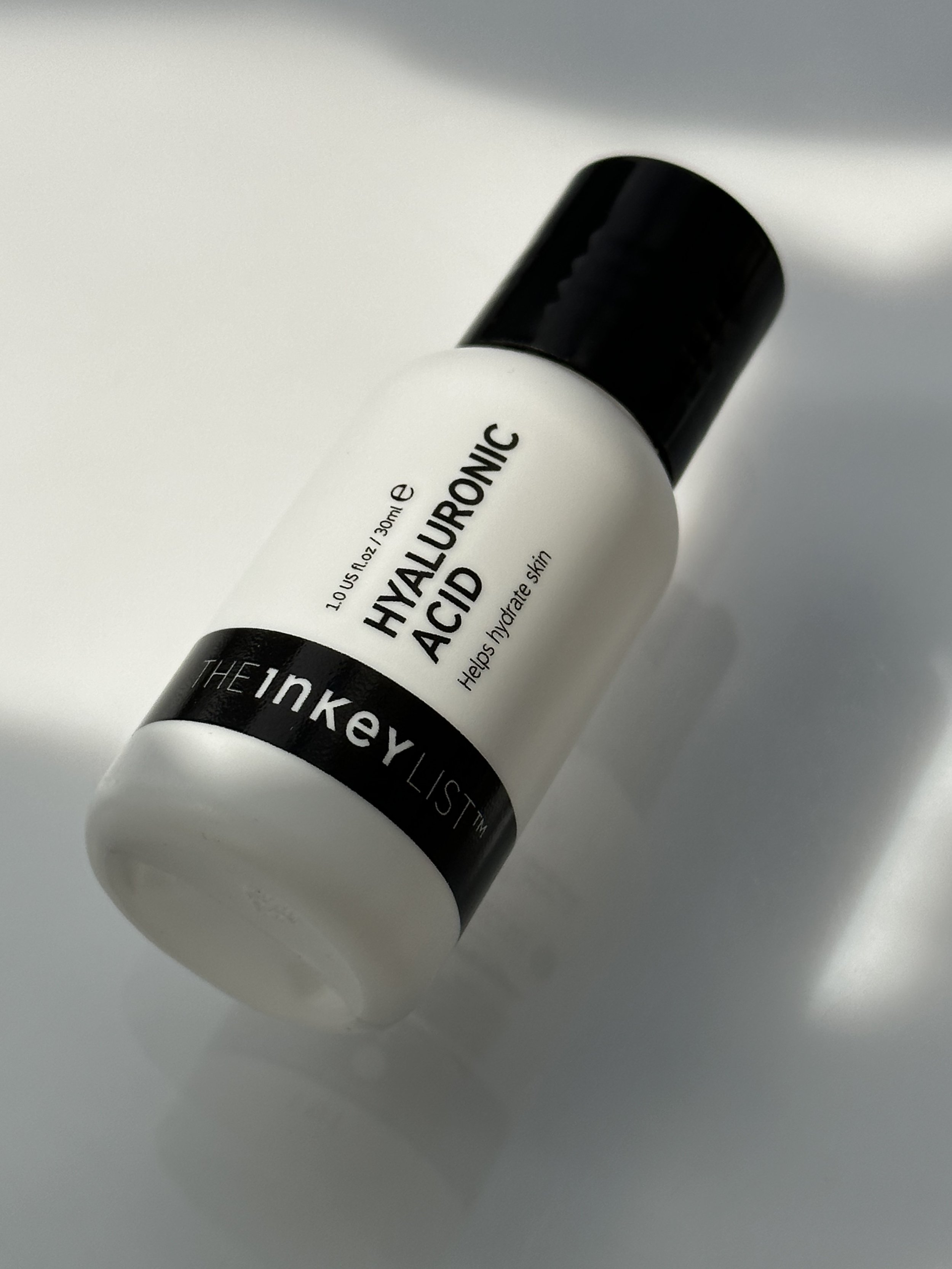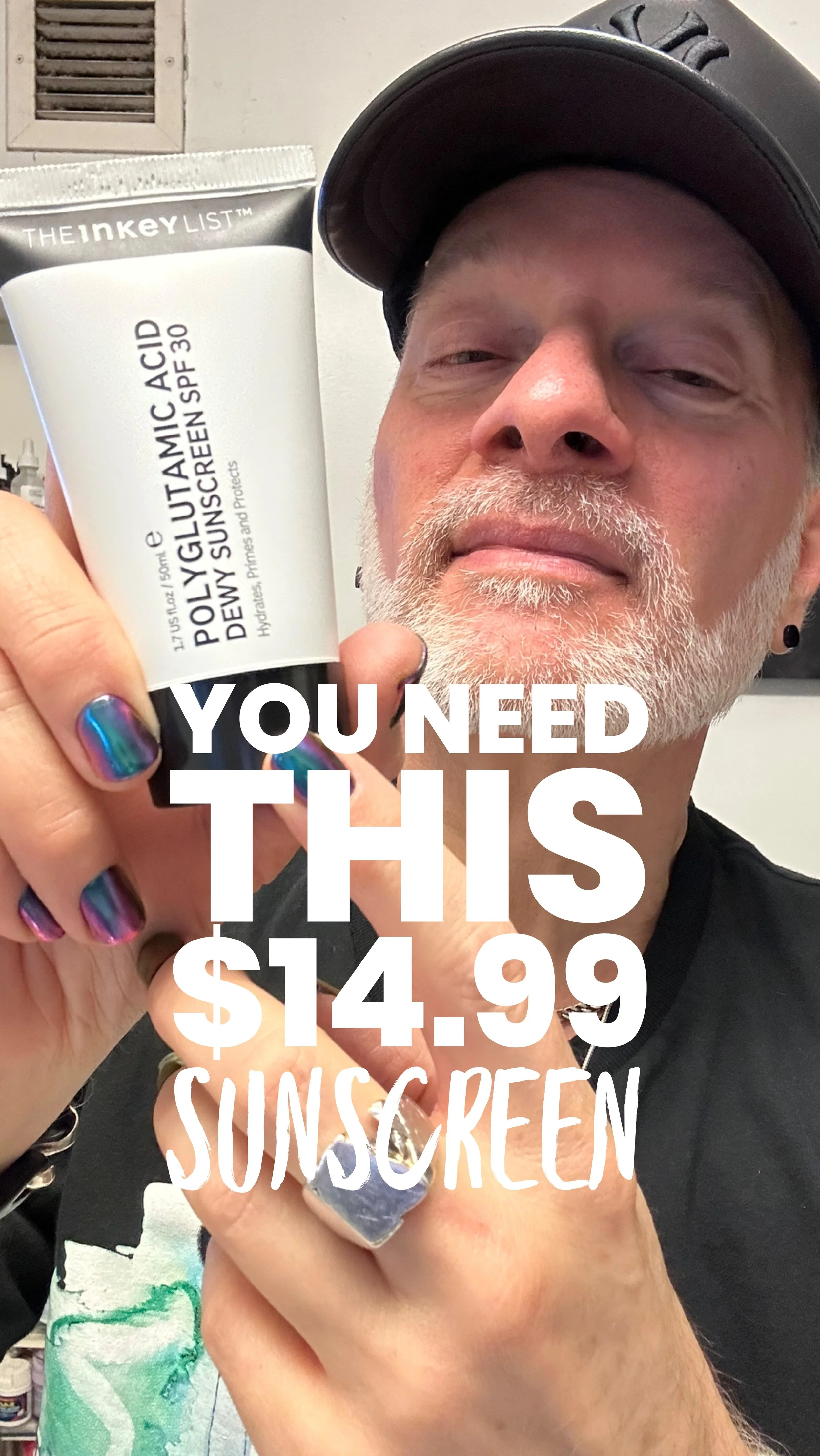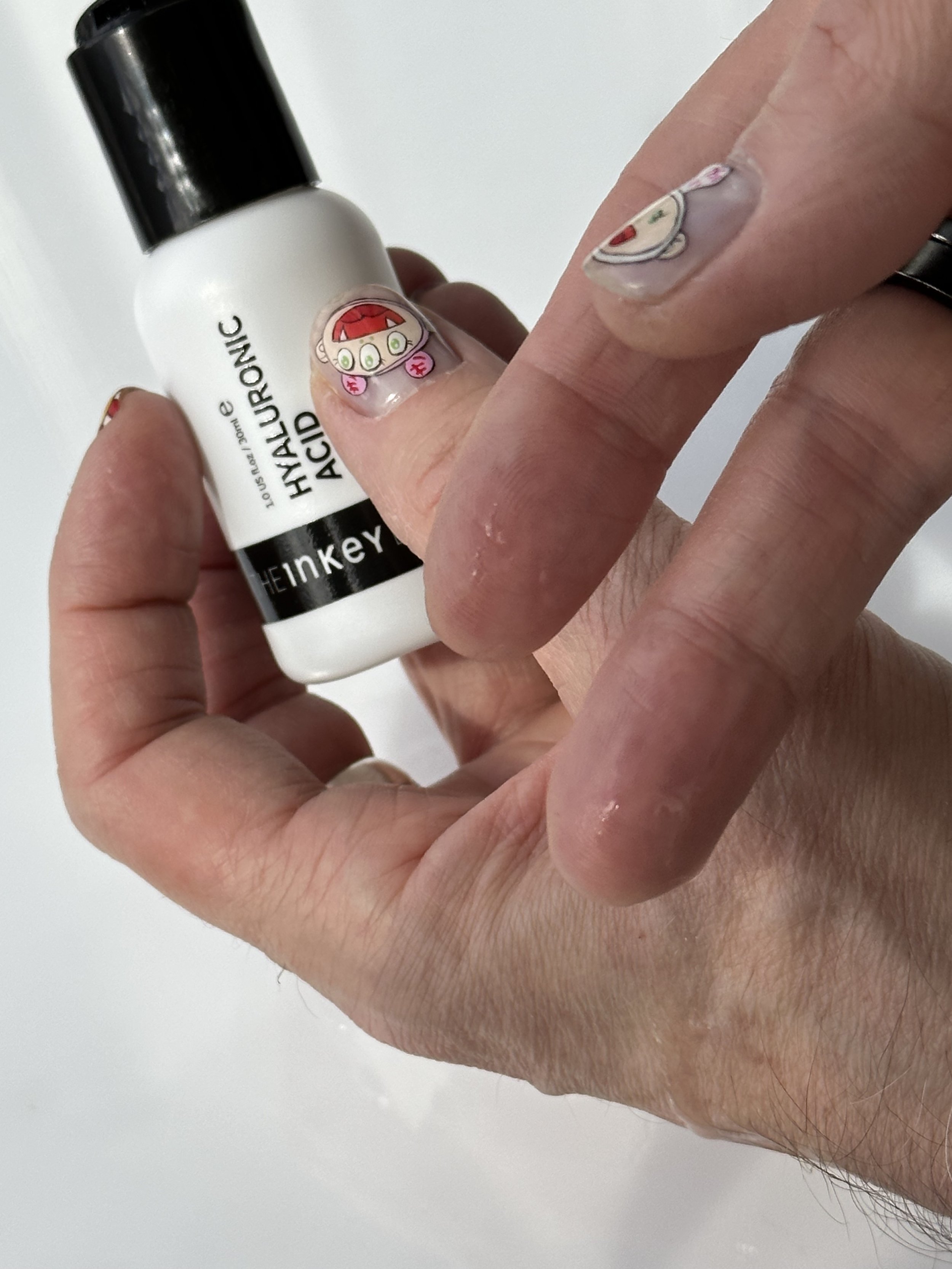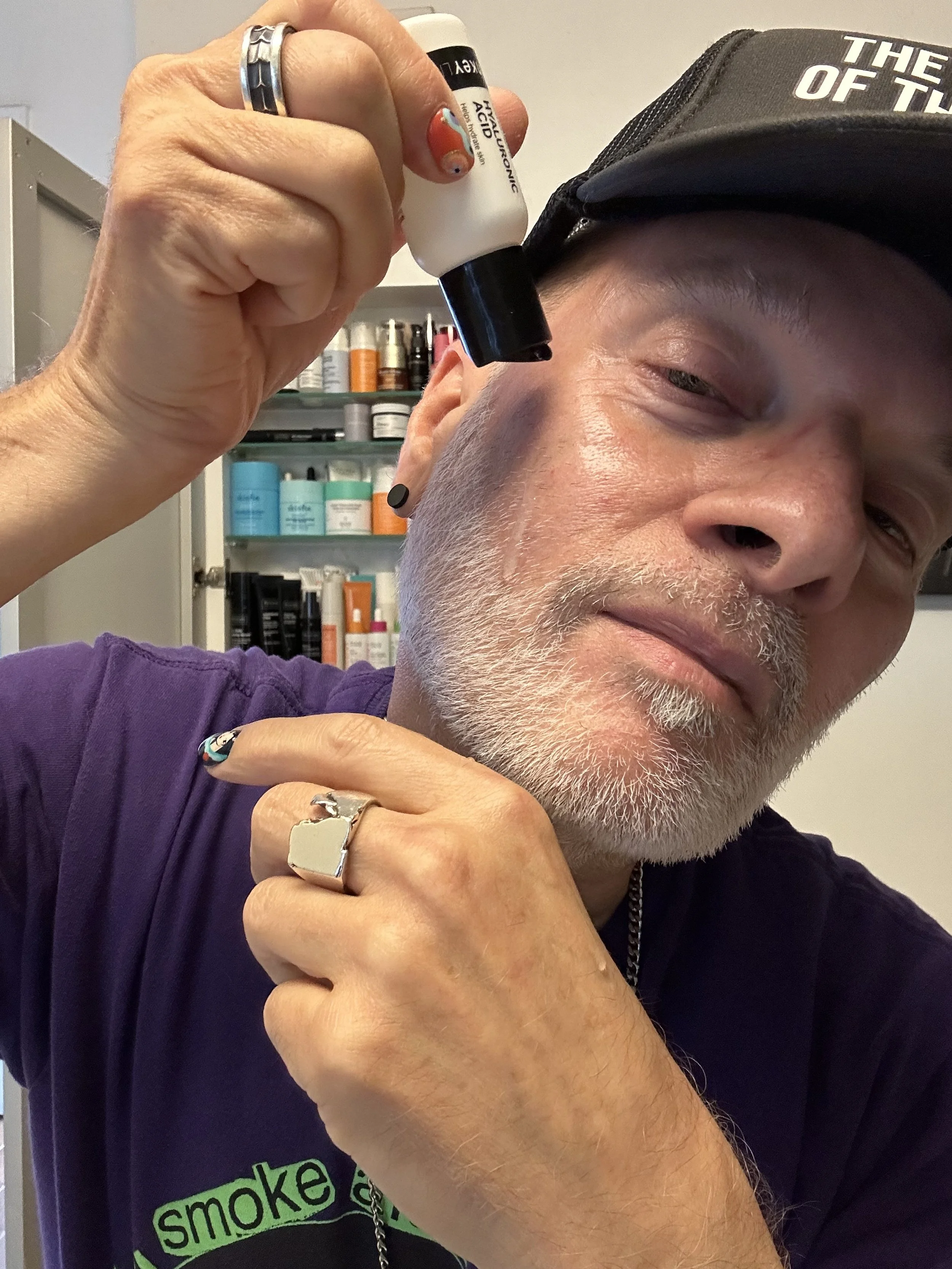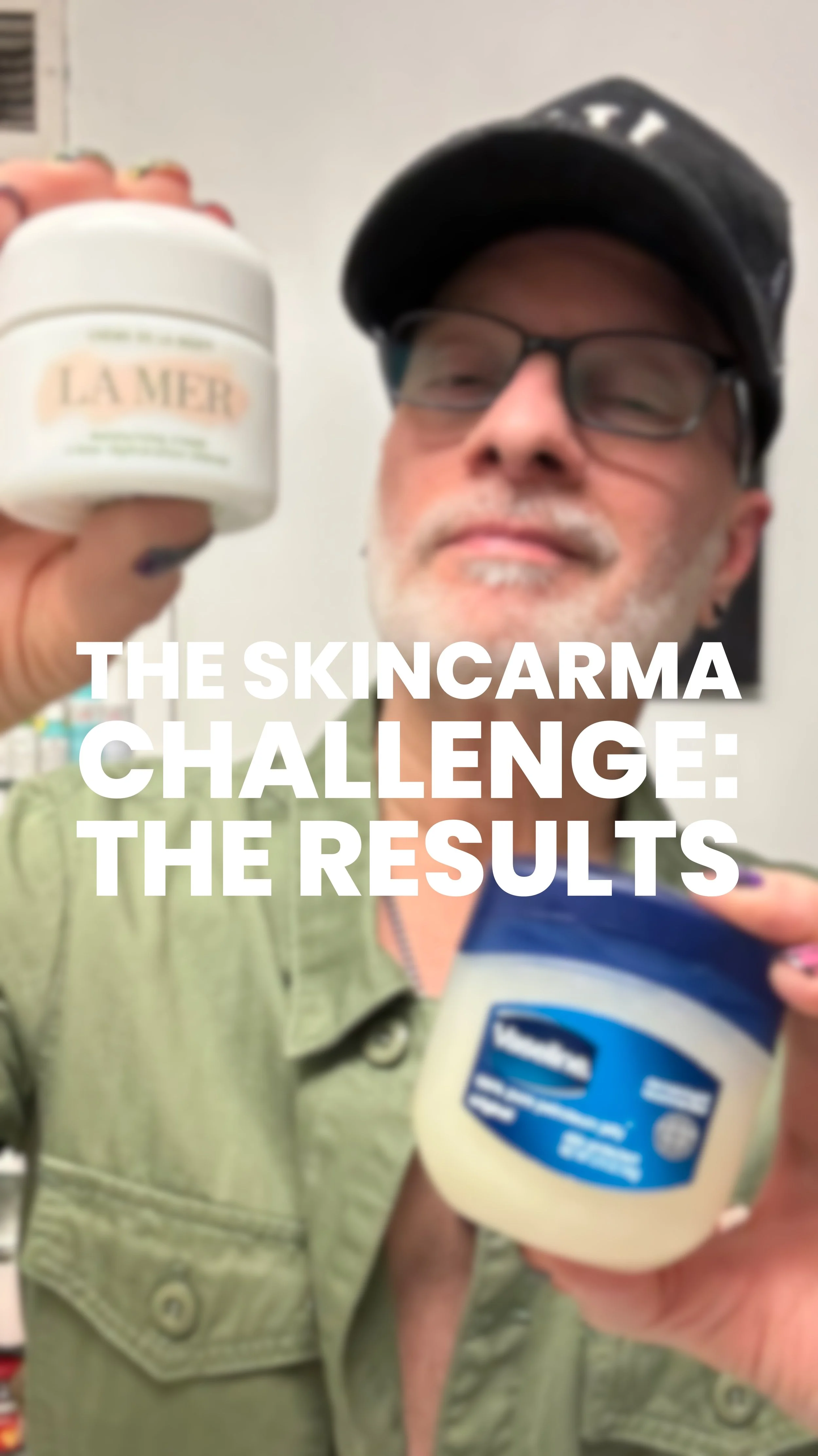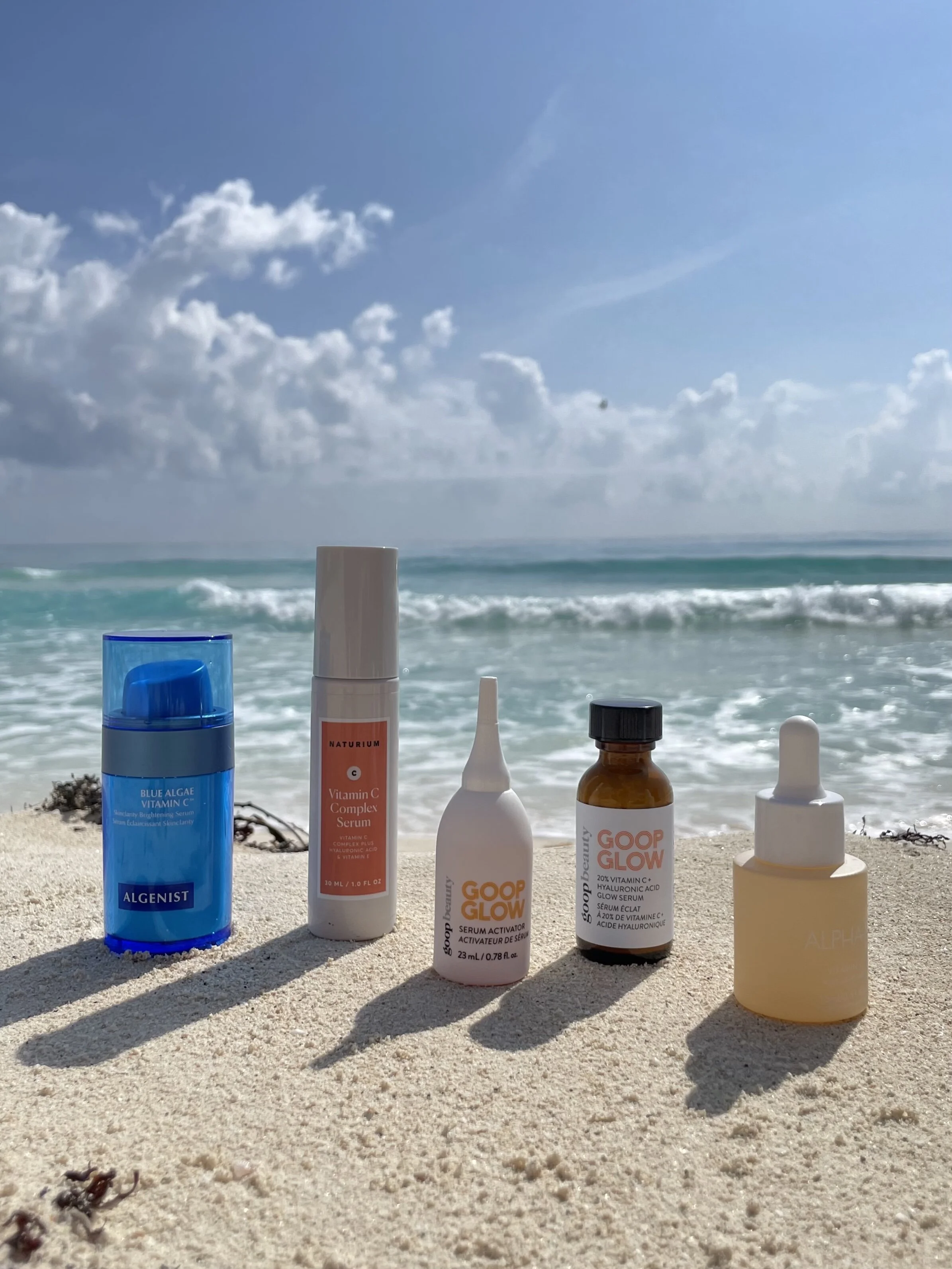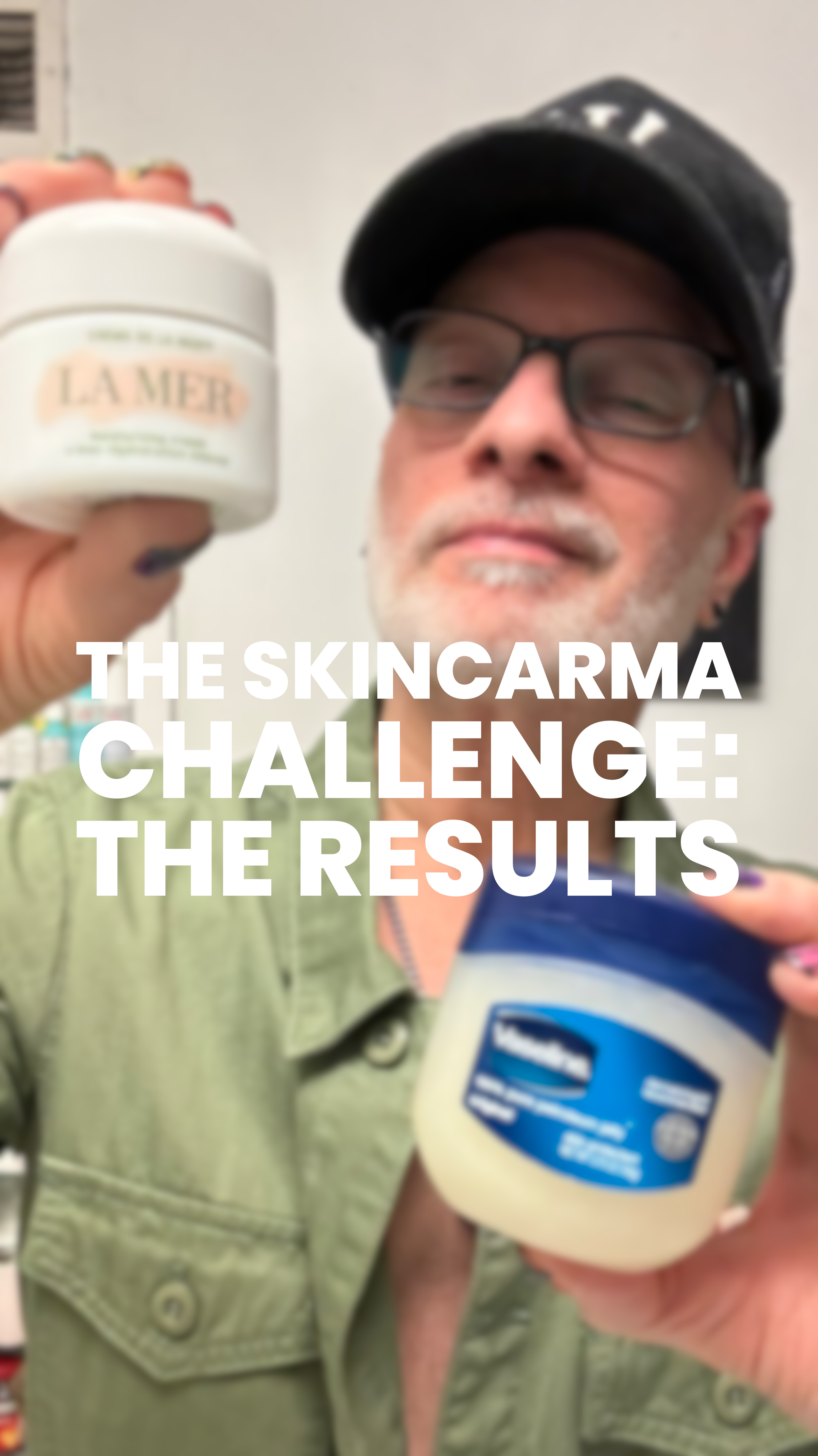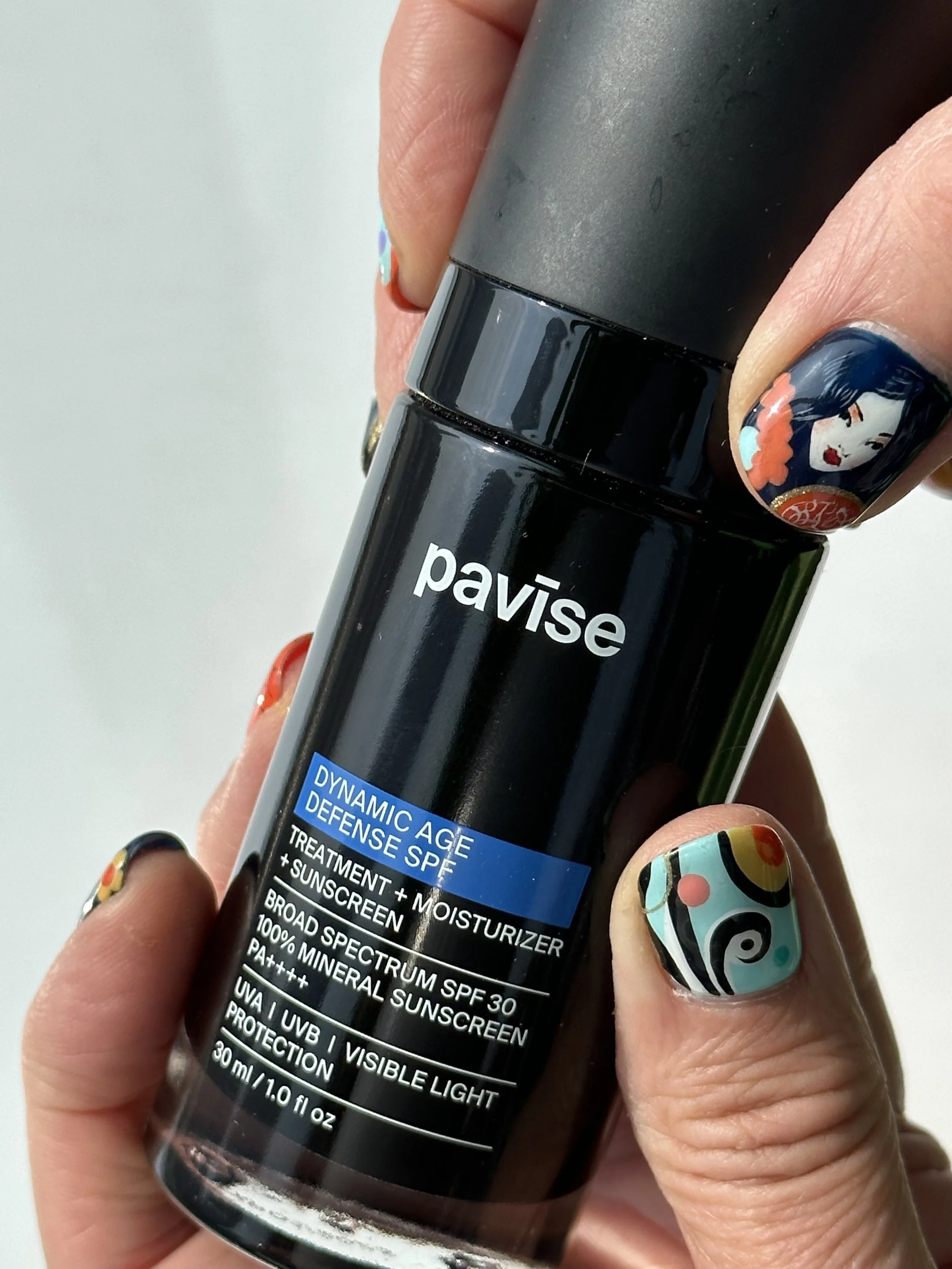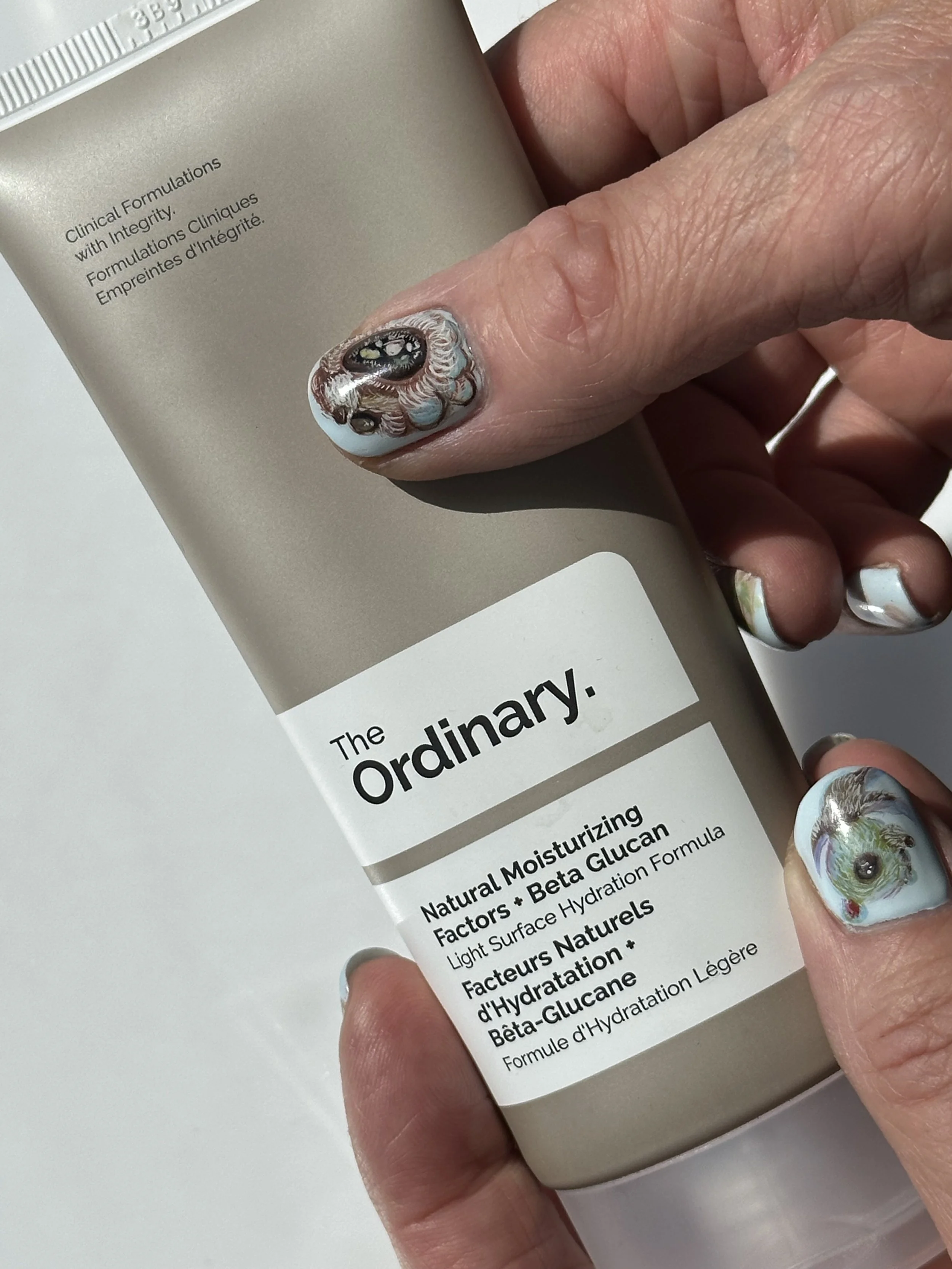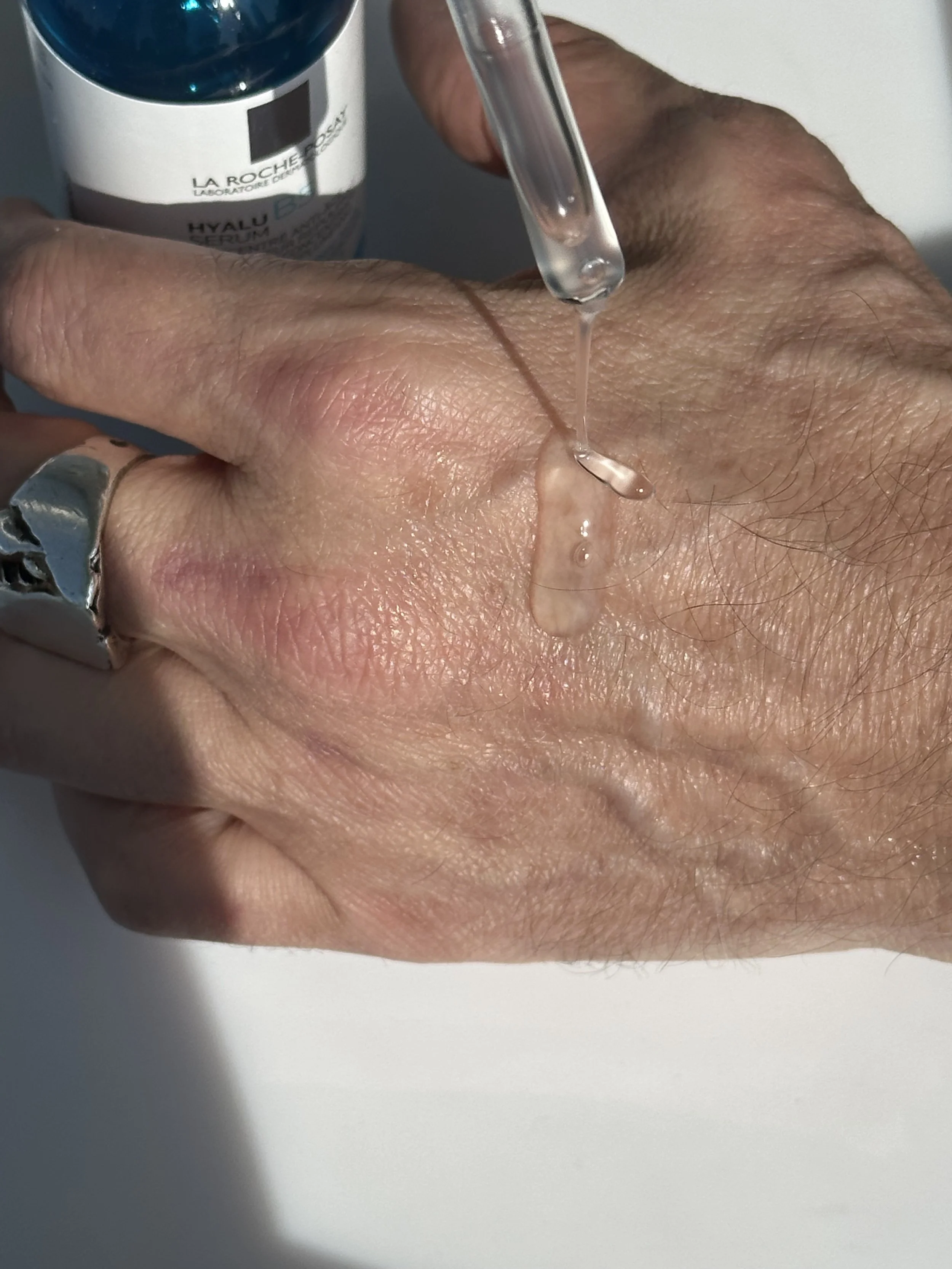PRODUCT REVIEW: THE INKEY LIST HYALURONIC ACID HYDRATING SERUM - What is Hyaluronic Acid? Is it OK to use Hyaluronic Acid every day? Can you mix Vitamin C and Hyaluronic Acid together?
THE INKEY LIST HYALURONIC ACID HYDRATING SERUM
INKEY innovation has been everywhere the past year. The brand has launched so many cool new products I can hardly keep up.
But perhaps most exciting was the introduction of INKEY’s first sunscreen for face. At least it was the first legitimate sunscreen from The INKEY List stateside.
I recall several years back that the brand did offer a Zinc Oxide moisturizer that made no claims to protect your skin from sun damage and signs of photoaging. It wasn’t an FDA-approved sunscreen and I think I bought it illegally online.
That’s just a fun tidbit of INKEY lore! The INKEY List’s new Polyglutamic Acid Dewy Sunscreen SPF 30 is sure enjoying its time in the sun – and has quickly become one of my favorite new facial sunscreen discoveries of 2023.
As I said in my The INKEY List Polyglutamic Acid Dewy Sunscreen SPF 30 review here, it’s a superb brightener, hydrator and facial sunscreen in one. It leaves your skin with a ridiculously dewy finish that lasts all day long. And at just $14.99, it’s one of the best sunscreens for the price. It’s such a wonderful formula and was certainly worth the wait!
Having reviewed something like 20 products from The INKEY List on the blog over the years, it’s kind of wild that I’d never reviewed The INKEY List’s Hyaluronic Acid Hydrating Serum – perhaps the brand’s best-selling product. But with summer right around the corner, now is the perfect time to take a deep dive into one of the best hydrating ingredients for healthy skin: Hyaluronic Acid.
Best Products from The INKEY List
Like a lot of experienced skincare users, I’m pretty clued into what my skin needs to stay healthy year-round – and how it changes from season to season. I’m literally two different people in summer and winter.
Winter is the worst, by far! How does your skin react in the cold? My skin is seriously out of whack. In the dry, low-humidity months from November to February, it becomes uncomfortable, I often get eczema flare-ups, and my neck hollows out. My skin needs a lot of oil and the occlusion that oils provide to prevent excessive dryness and trans-epidermal water loss (TEWL) through the skin barrier. (Ahem, that’s why the skin on my neck looks so awful in January!)
Moisture loss, including the depletion of both water and oil, is a serious matter for me in the winter. I know I’m not alone. The dry air can literally suck the water (and the life!) out of my face. To slow the process, I reach for heavier face creams, facial oils, and even sleeping masks to help prevent water loss and keep my skin as hydrated as possible.
The struggle is real.
But that was all so 6 months ago!
As the temperatures warm up here in Brooklyn, my skin’s needs have begun to shift dramatically. By my birthday in late July, the temps will reach into the 90s and I know I’ll be sweating “like a whore in church” (as the saying goes!). In fact, the subway platform in July and August is the most horrifying place to be in all of New York City. I have to bring a wash cloth or small towel with me to sop up the water running down my face, neck, back and chest. It’s not a good look!
What happens to your skin when you sweat a lot? Dehydration! All that sweat is water with some lipids mixed in, escaping through your pores – as if the faucet were left on. Or, sticking with the New York City reference, the fire hydrant has been opened and water is gushing into the street. You’ve seen it in the movies, I’m sure.
And just as that trans-epidermal water loss in winter, dehydration can become a major problem in summer, too. Dehydration can seriously compromise your skin health. The difference is your skin’s store of lipids, or oils, isn’t depleted as in winter – which is why you don’t need to apply a heavy, occlusive moisturizer. The last thing I want on my skin on that subway platform is a facial oil.
PRODUCT REVIEW: THE ORDINARY NATURAL MOISTURIZING FACTORS + PHYTOCERAMIDES
So how do you prevent TEWL in the summer if you’re sweating buckets of water? Well, replace it by drinking a lot more of it for starters! How much water should you drink a day? As a rule, you should try to drink one ounce of water per pound of body weight each and every day. If you weigh 150 lbs., you should be drinking 150 oz. of water.
Look at the water bottle you’re drinking from now and understand just how much that is. Most people don’t come anywhere close to drinking their weight in water.
Once you’ve got internal hydration down pat, you can focus on skincare tactics to prevent TEWL. And the best way to do that in summer sure ain’t a thick face cream. It’s a light, silky Hyaluronic Acid serum! The best Hyaluronic Acid serum will effectively lock water in your skin and hold it there, preventing dehydration. And, it will draw moisture from the air to your skin – something that isn’t possible in the low-humidity air of winter.
And here’s the great part of it: the best Hyaluronic Acid serum happens to be a simple one that’s easily layered and costs you no more than $10-15.
PRODUCT REVIEW: THE ORDINARY ALOE 2% + NAG 2% SOLUTION
The worst Hyaluronic Acid serum is one that costs you $300 and does no more than one you can get for ten bucks. As I often share, the biggest skincare scam on the market today is the $320 Dr. Barbara Sturm Hyaluronic Serum. Three hundred and twenty dollars for a Hyaluronic Acid serum that isn’t worth more than $10.
Her overpriced, over-hyped hydrating serum with Hyaluronic Acid does little more for your skin than two popular, affordable $10 options: The Ordinary Hyaluronic Acid 2% + B5 Hydrating Serum and The INKEY List’s Hyaluronic Acid Hydrating Serum – the subject of this review.
Is Dr. Barbara Sturm Hyaluronic Serum worth it? Of course not. The only thing distinguishing her serum from the two others is an additional antioxidant – and about $310. Literally one antioxidant. So what. Don’t be fooled by marketing spin. All a Hyaluronic Acid serum needs to do is deliver the potent humectant to your skin to help prevent dehydration.
Before I get to my product review of The INKEY List’s Hyaluronic Acid Hydrating Serum just below, I wanted to explore what Hyaluronic Acid is, when to use it, and what you can or can’t mix it with…
I’M LITERALLY OBSSESSED WITH THIS SUNSCREEN
1. What is Hyaluronic Acid?
Hyaluronic acid is a naturally occurring substance found in the body's connective tissues, including the skin, eyes, and joints. It is a glycosaminoglycan, which is a type of polysaccharide (a sugar molecule) that is capable of retaining large amounts of water, classifying it as a “humectant”.
Hyaluronic acid plays a crucial role in maintaining skin health by helping to keep it hydrated and plump. Because of its superior hydrating properties, it is commonly found in skincare products to help skin retain moisture and prevent what’s called trans-epidermal water loss, or TEWL.
Overall, using skincare products with Hyaluronic Acid can improve skin texture, reduce the visible appearance of fine lines and wrinkles, and leave you with a radiant and youthful complexion. It also has effective soothing properties that help to calm skin and prevent irritation.
2. Is it OK to use hyaluronic acid every day?
How often to use hyaluronic acid depends on the type of product you’re using and your individual skin needs. Generally, it’s safe to use hyaluronic acid every day as long as you’re using a product that’s appropriate for your skin type.
And a Hyaluronic Acid serum is ideal as it’s not loaded up with other ingredients that may not be suitable for your skin. That’s why I believe the best way to use the potent humectant is with a dedicated face serum with Hyaluronic Acid. One that’s easily layered into a routine is optimal as it will get the job done.
Depending on your skin’s needs, you may or may not need to use a Hyaluronic Acid serum twice daily. And overuse of HA can actually dry out your skin as the molecule can not only draw water from the air, but from the deeper layers of your skin to the surface. This is more common in the low-humidity months of winter when HA will draw water from the deeper layers of your skin, rather than from the air.
As with any new skincare product, it’s wise to incorporate only one new product at a time into your routine and monitor your skin’s response to it.
Sources: Healthline: “Hyaluronic Acid: Benefits, Side Effects, and Dosage” https://www.healthline.com/nutrition/hyaluronic-acid-benefits; Refinery29: “Can You Use Hyaluronic Acid Every Day?” https://www.refinery29.com/en-us/how-to-use-hyaluronic-acid-skincare-routine; Real Simple: “Here's How Often You Should Be Using Hyaluronic Acid” https://www.realsimple.com/beauty-fashion/skincare/hyaluronic-acid
3. What not to mix with hyaluronic acid.
As with all potent skincare actives, and especially when applying them as dedicated serums or treatments, you should closely monitor your skin’s response.
Sure, there are certain skincare ingredients that do not work well together – as well as ingredients that make each other better. As a rule, it is best not to use harsh “direct acids” like Glycolic Acid and Lactic Acid in the same routine as retinoids or other exfoliating acids. On the other hand, Niacinamide and Vitamin C, or Ascorbic Acid, work very well together and even strengthen each other’s abilities.
Hyaluronic Acid is an indirect acid that doesn’t exfoliate the skin. It hydrates skin by holding onto water molecules (you know, H20!) and preventing them from escaping through the skin barrier. This is how HA keeps your skin hydrated – and why it’s one of the best humectants used in skincare.
On average, there should be little to no adverse side-effects when incorporating Hyaluronic Acid into a skincare routine with other actives, including Retinol, Vitamin C and Glycolic Acid. However, everyone’s skin response is different and it varies seasonally. Because of that, you may find cautions on the web about mixing HA with other actives. These are just cautions and serve as a reminder to monitor how your skin responds to the products you apply.
In addition, Hyaluronic Acid has soothing properties which only add to its versatility.
Sources: Healthline: “Hyaluronic Acid: Benefits, Side Effects, and Dosage” https://www.healthline.com/nutrition/hyaluronic-acid-benefits; Byrdie: “How to Layer Acids Like a Pro” https://www.byrdie.com/how-to-layer-skincare; Harper’s Bazaar: “Skincare Ingredients You Should Never Mix” https://www.harpersbazaar.com/beauty/skin-care/a28716014/skincare-ingredients-not-to-mix/; Good Housekeeping: “How to Layer Your Skincare Products, According to a Dermatologist”https://www.goodhousekeeping.com/beauty/anti-aging/a35035579/how-to-layer-skin-care-products/
4. Can you mix vitamin c and hyaluronic acid together?
Yes, it is generally safe to use hyaluronic acid and vitamin C together, in the same routine, as they can complement each other’s benefits for your skin. Hyaluronic Acid helps to hydrate and soothe skin while Vitamin C, one of the most broadly beneficial actives, delivers antioxidant protection, brightens the complexion, evens out skin tone and stimulates collagen production.
However, it’s important to note that not all skincare ingredients can or should be used at the same time. Your skin’s reaction to a particular active or combination of actives is also contingent upon the specific formula and the concentrations of the active used in a product.
To gauge your skin’s response to a combination of actives, it’s best to patch test a product first. Additionally, it’s a smart idea to use only one new product at a time so you can isolate any skin issues that arise.
Sources: Kiehl’s: “How To Use Hyaluronic Acid & Vitamin C Together” https://www.kiehls.com/skincare-advice/how-to-use-hyaluronic-acid-and-vitamin-c-together; Procoal: “How to Layer Hyaluronic Acid and Vitamin C”https://procoal.co.uk/blogs/skincare/how-to-layer-hyaluronic-acid-and-vitamin-c; Timeless Skin Care: “Why Hyaluronic Acid & Vitamin C Work Well Together” https://www.timelessha.com/blogs/news/why-hyaluronic-acid-vitamin-c-work-well-together
5. Product Review
The INKEY List Hyaluronic Acid Hydrating Serum Review
As I said, I’ve reviewed multiple products from The INKEY List over the years and several are regular staples in my skincare routines – both AM and PM. You can catch all my INKEY reviews here in the category “Best Products from The Inkey List.”
Among my all-time INKEY faves are The INKEY List SuperSolutions 20% Niacinamide Serum and the ridiculously light and silky Omega Water Cream Moisturizer – one of the best moisturizers for oily skin and all skins in the summer.
As I said in my review of it on the blog here, I believe The INKEY List’s Omega Water Cream Moisturizer is the best face cream the brand has offered to date. Its light, refreshing texture is quickly absorbed by the skin while its blend of occlusive lipids and water-binding humectants are ideal for preventing TEWL.
And in summer it’s all about the TEWL, baby!
Which is the perfect segue to The INKEY List’s Hyaluronic Acid Hydrating Serum – the best tool you have for preventing TEWL in the first place! :)
What’s so appealing about The INKEY List and other super-affordable, democratically priced skincare brands – The Ordinary, Naturium and Good Molecules included – is that they do simple things, well, simply. Like hydrating your skin.
Honestly, you don’t need a Hyaluronic Acid serum to do anything but hydrate your skin. And when you’re only paying $10.99 for a serum, you don’t expect it to. But The INKEY List Hyaluronic Acid Hydrating Serum actually does more than deliver Hyaluronic Acid to your skin. It’s also infused with the popular line-smoothing peptide complex, Matrixyl 3000™.
That surprised even me! (More on that in a moment.)
What percentage of Hyaluronic Acid is in The INKEY List Hyaluronic Acid Serum? According to the brand, there’s a combined 2% concentration of Hyaluronic Acid in the formula – the maximum recommended level. The brand refers to it as “Multi Molecular Hyaluronic Acid,” which is essentially an indication that there are two or more molecular weights of HA in a formula for enhanced efficacy.
IT’S THE BEST SUNSCREEN UNDER $15. PERIOD.
In the ingredient list (ahem, INCI) of this INKEY serum, you’ll find both pure Hyaluronic Acid and Sodium Hyaluronate – the salt form of Hyaluronic Acid that is more compatible with human skin.
What do different Hyaluronic Acid molecules do differently than one form of HA alone? Well, different molecular weights of Hyaluronic Acid can penetrate the skin more effectively and provide different benefits.
Specifically, higher molecular weight Hyaluronic Acid molecules form a film on the skin’s surface to provide moisture retention and hydration, while lower molecular weight Hyaluronic Acid molecules can penetrate deeper into the skin to hydrate and soothe skin from within and even help stimulate collagen production.
Again, in addition to its multi-molecular HA molecules, The INKEY List’s Hyaluronic Acid Hydrating Serum contains the relatively commonplace, yet effective, Matrixyl 3000 peptide complex.
You may be familiar with The Ordinary’s Matrixyl 10% + HA – a popular $10 face serum with both hydrating and anti-aging benefits. Personally, I like to use the gentle, effective serum around my eyes!
What is Matrixyl 3000 and what does Matrixyl 3000 do? The popular, trademarked Matrixyl 3000 molecule is a type of synthetic peptide used in skincare for its ability to stimulate collagen production, which can help reduce the appearance of fine lines, wrinkles, and other signs of aging.
Matrixyl 3000 contains a combination of two peptides: Palmitoyl Oligopeptide and Palmitoyl Tetrapeptide-7. The proprietary complex is a common skincare ingredient found in many anti-aging products due to its ability to promote collagen formation and improve the skin’s overall texture and appearance.
So you see, The INKEY List Hyaluronic Acid Hydrating Serum is more than a mere hydrating Hyaluronic Acid serum! Its super light, velvety texture is quickly absorbed by your skin where it gets to work immediately doing what you need it to do – hold that water in place on a hot summer day!
6. Pros & Cons
What I like about it: I love the simplicity of The INKEY List Hyaluronic Acid Hydrating Serum and its ease of use. As a Hyaluronic Acid hydrating serum, it has two molecular weight HA molecules, ideal for hydrating skin at multiple levels. But I also appreciate the addition of the anti-aging Matrixyl 3000 peptide complex. It’s a smart, solid, well-priced wonder for hydrating skin in the heat – and helps to smooth the fine dehydration lines around your eyes.
What I don’t like about it: Honestly, I like everything about it.
Who it’s for: All skin types, including oily, sensitive, and acne-prone skins.
SHOP THE BLOG: Want to try it for yourself? Purchase The INKEY List Hyaluronic Acid Hydrating Serum for $9.99 here.
The Ingredient List of The INKEY List Hyaluronic Acid Hydrating Serum:
 sii|h 0 0, Butylene Glycol h|solv 0 1, Sodium Hyaluronate
sii|h 0 0, Butylene Glycol h|solv 0 1, Sodium Hyaluronate  sii|h 0 0, Ammonium Acryloyldimethyltaurate/Vp Copolymer vc, Leuconostoc/Radish Root Ferment Filtrate amic|pres, Hyaluronic Acid
sii|h 0 0, Ammonium Acryloyldimethyltaurate/Vp Copolymer vc, Leuconostoc/Radish Root Ferment Filtrate amic|pres, Hyaluronic Acid  sii|h, Carbomer vc 0 1, Polysorbate 20 emu|surf 0 0, Palmitoyl Tetrapeptide-7
sii|h, Carbomer vc 0 1, Polysorbate 20 emu|surf 0 0, Palmitoyl Tetrapeptide-7  cci, Palmitoyl Tripeptide-1
cci, Palmitoyl Tripeptide-1  cci, Phenoxyethanol pres
cci, Phenoxyethanol presIS IT REALLY A SCAM?
Find out on my TikTok channel.
MY TOP VITAMIN C PICKS FW21: NEW VITAMIN C SERUMS I’M CRUSHING ON FROM ALGENIST, NATURIUM AND MORE
WATCH MY VIDEO REVIEW
THE BEST NIACINAMIDE SERUMS FOR CLOGGED PORES AND A BRIGHTER COMPLEXION
ON MY YOUTUBE CHANNEL HERE
WATCH MY VIDEO REVIEW OF
SKINCARE HACKS: GLYCOLIC ACID IS THE NATURAL DEODORANT THAT WORKS!
ON MY YOUTUBE CHANNEL HERE
WATCH MY VIDEO REVIEW OF
MY FAVORITE HUMECTANT SERUMS FROM PAULA'S CHOICE, THE INKEY LIST, GHOST DEMOCRACY AND MORE
ON MY YOUTUBE CHANNEL HERE
WATCH MY VIDEO REVIEW
COOL CLEAN FACIAL SUNSCREENS TO KEEP US SAFE AND SMILING IN THE SUN!
ON MY YOUTUBE CHANNEL HERE
WATCH MY VIDEO REVIEW
THE OPULUS BEAUTY LABS RETINOL SYSTEM – THE COOLEST RETINOL INNOVATION I’VE EVER SEEN
ON MY YOUTUBE CHANNEL HERE
WATCH MY VIDEO REVIEW
MY 2021 VITAMIN C PICKS + THE BEST VITAMIN C SERUMS TO BRIGHTEN UP THE COMPLEXION!
ON MY YOUTUBE CHANNEL HERE
WATCH MY VIDEO REVIEW OF
MY WINTER SKIN SAVIOR: SKINFIX BARRIER+ LIPID REPLENISHING SKINCARE
ON MY YOUTUBE CHANNEL HERE
WATCH MY VIDEO REVIEW
A COMPLETE K-BEAUTY ROUTINE WITH THE BEST FACIAL SKINCARE FROM PURITO, COSRX, MISSHA & MORE!
ON MY YOUTUBE CHANNEL HERE
WATCH MY VIDEO REVIEW
THE YEAR’S BEST VITAMIN C SERUMS WITH PAULA'S CHOICE, SUNDAY RILEY, THE INKEY LIST AND MORE!
ON MY YOUTUBE CHANNEL HERE
WATCH MY VIDEO REVIEW OF
A SELFCARE SUNDAY NOT FOR THE FAINT OF HEART – WITH THE PAULA’S CHOICE 25% AHA PEEL!
ON MY YOUTUBE CHANNEL HERE


